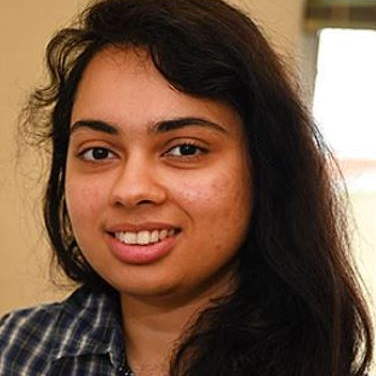Shohini Bhattacharya
Assistant Professor
Department of Physics
Research Interests
The observable universe is made up mostly of protons and neutrons — collectively known as nucleons — the fundamental building blocks of atomic nuclei. According to our current understanding, rooted in the theory of Quantum Chromodynamics (QCD), nucleons are not simple objects. They are intricate assemblies of quarks and gluons, collectively known as partons. Unraveling how these quarks and gluons shaped the universe, from the hot, dense soup that followed the Big Bang to the mass we observe today, is one of the most exciting challenges in modern science.
For decades, experiments have helped us probe the structure of nucleons by measuring distribution functions, which are essentially maps of how quarks and gluons behave inside nucleons. While we have made significant progress in understanding the one-dimensional distributions of quarks and gluons, we are still missing the full picture. To truly understand nucleons, we need to explore their internal dynamics in multiple dimensions, raising questions like:
-
How do the spin and orbital motion of quarks and gluons contribute to the overall spin of the nucleon?
-
What accounts for the mass of nucleons and other hadrons?
-
How do quarks and gluons generate internal forces like pressure, and how do these forces shape nucleons?
Addressing these questions requires a concerted effort that combines theoretical and experimental approaches. Facilities like the Electron-Ion Collider (EIC) at Brookhaven National Laboratory will play a crucial role in probing the partonic structure of nucleons, and my research focuses on providing the theoretical groundwork necessary for answering these questions, as well as interpreting and guiding experimental efforts.
I aim to explore the multi-dimensional partonic structure of hadrons, driven by a deep understanding of the scientific objectives of the EIC. My research focuses on perturbative QCD, which helps establish the theoretical framework of scattering processes, and its impact on phenomenology, which connects theory and experimental data by making testable predictions, thereby bridging the two. In simpler terms, I help build the theoretical ‘blueprints’ that experiments rely on to make sense of the complex data they collect. Moreover, my work involves collaboration with experts in lattice QCD – a numerical method used to study quarks and gluons within a discretized spacetime framework – and experimental physics, emphasizing the importance of a strong connection between both analytical and numerical theories and experiments.
By advancing our understanding of QCD, we not only deepen our knowledge of the fundamental building blocks of matter but also test the Standard Model of particle physics, our most comprehensive theory of how the universe operates. I am also investigating potential sources of CP violation that could help explain one of the most profound questions in cosmology — why there is more matter than antimatter in the universe.
In short, the study of QCD isn’t just about protons and neutrons – it is about unlocking the deepest secrets of the cosmos, and that is what makes it so thrilling to be a part of this journey.
Education
- Ph.D., Theoretical Nuclear Physics, Temple University, 2021
- M.Sc., Physics, Indian Institute of Technology, Delhi, 2014
- B.Sc., Physics, University of Calcutta, 2012
Experience
- 2025-present: Professor, Department of Physics, University of Connecticut
- 2024: J. Robert Oppenheimer Fellow, Los Alamos National Laboratory
- 2021-2024: Postdoctoral Research Associate, Brookhaven National Laboratory (BNL) and RIKEN BNL Research Center
Honors
- 2024, Oppenheimer Distinguished Fellowship

| shohinib@uconn.edu | |
| Phone | (860) 486-4377 |
| Mailing Address | Dept. of Physics, University of Connecticut, 196 Auditorium Road, U-3046, Storrs, CT 06269 |
| Office Location | S413J |
| Campus | Storrs |
| Link | Group Website |